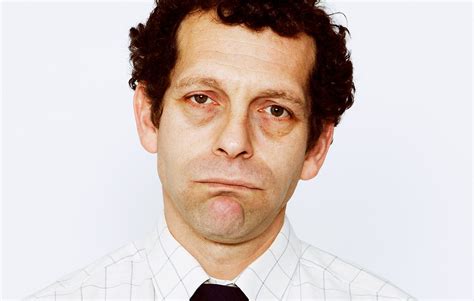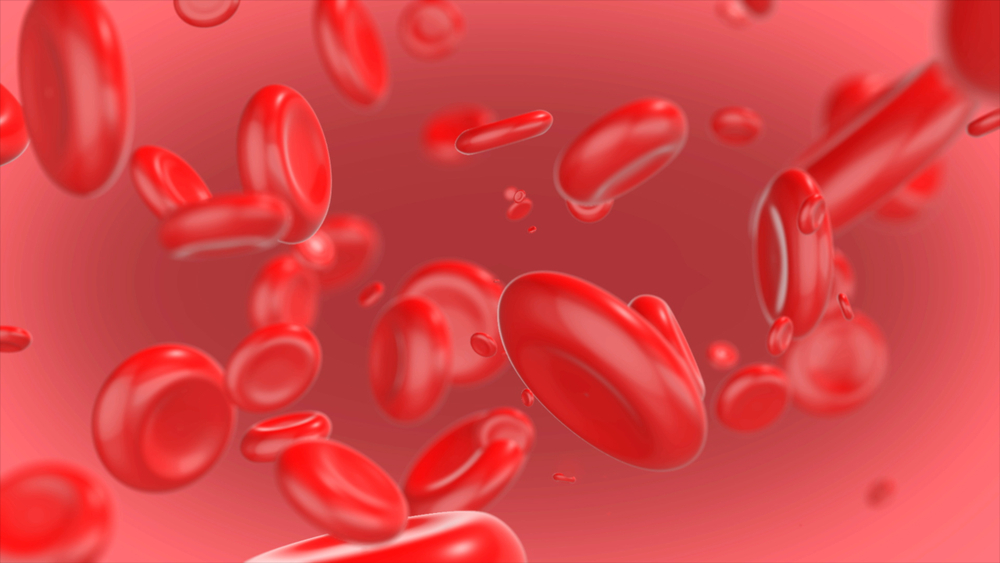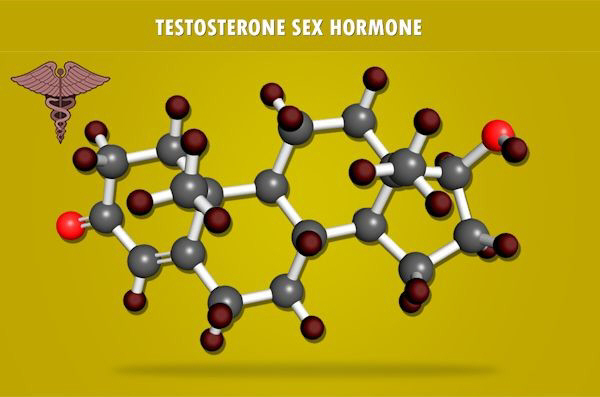It is often claimed that periorbital dark circles are caused by tiredness or working too hard or even just staying up late.
Video Link: https://vimeo.com/419450207
Video Download: Click Here To Download Video
Video Stream: Click Here To Stream Video
While this can be true, the truth is that your genes play a considerable role here.  So what exactly is happening when you get dark circles under or around your eyes?
So what exactly is happening when you get dark circles under or around your eyes?
Simply put, periorbital dark circles are a result of the thin layer of skin below your eyes, showing the blood vessels and the blood they contain more clearly than anywhere else on your body.
(For reference, this skin around your eyelids, called periorbital skin, is on average about 0.5 mm thick compared to an average of about 2 mm thick on most of the rest of your body.)
Now, as you may or may not already know, the reason veins often look blue isn't that the blood inside them is blue; it's because your skin/subcutaneous tissue only lets blue/violet wavelengths of light pass through it.
As a result, only blue light is reflected, and the veins look, well, bluish. (Veins often won't appear blue if a person has darker or lighter skin. Instead, the veins tend to appear green or brown.
On the other hand, people with extremely light skin, such as albinos, will typically have veins that show up as dark purple or dark red, more closely resembling the actual color of the blood running through the veins.)
It's the exact same concept with the skin below your eyes. Those dark bluish circles are (usually) just the result of light being reflected off of the blood vessels sitting just below the surface of that incredibly thin patch of skin.
sitting just below the surface of that incredibly thin patch of skin.
This is the same reason facial bruises are more prominent below or around the eyes; the thin skin just shows the blood from the ruptured blood vessels a little bit more clearly.
Again, as you may or may not know, as we age, our skin loses its elasticity and ability to regenerate, and as a result, it becomes thinner. This is why more often than not, elderly people will have rather prominent periorbital dark circles regardless of how much they sleep.
As with those who are genetically predisposed to having thinner skin below the eyes, it's just biology.
Another thing that can cause dark circles beneath the eyes is something known as periorbital hyperpigmentation, which is a condition that results in more melanin being produced by the skin below the eyes, resulting in it appearing to be a darker color.
This is mostly a condition that affects (or is at least more noticeable in) darker skinned people. According to Pratik B Sheth et al. of the PDU Government Medical College and Hospital in India, this is one of the most common complaints dermatologists have to deal with.
Unfortunately, as explained in this case study about an Indian gentleman with a particularly severe case of periorbital melanosis, it's challenging to treat in darker skinned patients, which has led to a booming niche market of cover-up make-up for people with darker complexions.
All that said, many factors can make dark circles appear worse, even if you're not genetically predisposed to them. One of the more severe soundings is the  oxidization of blood leaking from the periorbital blood vessels, which is just a fancier way of saying that sometimes the blood vessels around your eyes can get damaged, blood leaks out, and you're left with puffy dark circles under your eyes.
oxidization of blood leaking from the periorbital blood vessels, which is just a fancier way of saying that sometimes the blood vessels around your eyes can get damaged, blood leaks out, and you're left with puffy dark circles under your eyes.
It's a relatively simple problem, and even the chronic sufferers of this sort of blood leaking need not worry too much about it. It is also technically reversible with the right treatment, though changes in lifestyle are often recommended before one should consider opting for surgery.
Another problem that goes hand-in-hand with periorbital dark circles is periorbital puffiness, aka bags below your eyes. In young folk, this is almost always caused by fluid buildup below the eyes, either due to illness, allergies, or merely excessive salt consumption which can result in the body retaining more fluid than usual.
This can place increased pressure on the skin and blood vessels around the eyes, which can force blood vessels closer to the surface of the skin, making dark circles appear more prominent. Eye puffiness can also merely be a result of old age.
Now all of that is (hopefully) interesting to you, but we still haven't accurately answered the question: Can those dark circles be caused by fatigue and, if so, why? Well, the answer to the former is: sometimes. So why exactly is this the case? It's not like lack of sleep makes your skin thinner, right?
The answer is thought to lie in how the body acts when it's low on energy. When the body is tired, production of the chemical cortisol is dramatically increased to help give you the energy you need to stay awake.
Among many other things, cortisol increases the volume of the blood in your body, which causes the blood vessels (including the ones below your eyes) to engorge to accommodate it.
As we've already mentioned, dark circles are mostly created by us seeing our blood vessels/blood through our skin, so it stands to reason that when those blood vessels are engorged, they'd be easier to see, even in people who may have been blessed with thicker skin below their eyes.
blood vessels/blood through our skin, so it stands to reason that when those blood vessels are engorged, they'd be easier to see, even in people who may have been blessed with thicker skin below their eyes.
References
Contact Us Today For A Free Consultation

- New female 'sex-drive' drug to be tested [Last Updated On: January 14th, 2025] [Originally Added On: November 2nd, 2012]
- BioSante will merge with ANI Pharma in stock deal [Last Updated On: December 13th, 2017] [Originally Added On: November 2nd, 2012]
- Female sex-enhancing nasal spray undergoing clinical trials [Last Updated On: October 24th, 2015] [Originally Added On: November 2nd, 2012]
- Project 47 XXY - Living with Klinefelter's Syndrome - Video [Last Updated On: January 15th, 2025] [Originally Added On: November 2nd, 2012]
- The Benefits of Testosterone Gel - Video [Last Updated On: January 16th, 2025] [Originally Added On: November 2nd, 2012]
- Pros And Cons of Testim - Video [Last Updated On: January 15th, 2025] [Originally Added On: November 2nd, 2012]
- BioSante Pharma Completes Enrollment in Pivotal LibiGel Trials - Video [Last Updated On: January 16th, 2025] [Originally Added On: November 2nd, 2012]
- Testosterone Replacement and Sperm Production - Video [Last Updated On: January 17th, 2025] [Originally Added On: November 2nd, 2012]
- Androgel July 09, 2010, 02:32 PM - Video [Last Updated On: January 17th, 2025] [Originally Added On: November 2nd, 2012]
- Insidermedicine In Depth - July 8, 2010 - Testosterone - Video [Last Updated On: January 18th, 2025] [Originally Added On: November 2nd, 2012]
- A 'female Viagra' nasal spray has started clinical trials [Last Updated On: May 4th, 2015] [Originally Added On: November 9th, 2012]
- GTA IV Heliride - Standing Erection - Video [Last Updated On: December 10th, 2012] [Originally Added On: December 10th, 2012]
- Testosterone gels can affect women, kids [Last Updated On: December 22nd, 2017] [Originally Added On: January 14th, 2013]
- Questions Answers - Detox And Testosterone Gel [Last Updated On: December 29th, 2016] [Originally Added On: August 16th, 2013]
- Testosterone gel: Indications, Side Effects, Warnings - Drugs.com [Last Updated On: December 1st, 2017] [Originally Added On: October 31st, 2013]
- AndroGel® (testosterone gel) 1% - National Institutes of Health [Last Updated On: December 21st, 2017] [Originally Added On: October 31st, 2013]
- What is Testosterone Gel? | Consumer Health PanelConsumer Health Panel [Last Updated On: December 27th, 2017] [Originally Added On: November 15th, 2013]
- What is Testosterone Gel? | Consumer Health PanelConsumer ... [Last Updated On: January 18th, 2018] [Originally Added On: November 18th, 2013]
- AndroGel testosterone gel New FDA Drug Approval | CenterWatch [Last Updated On: January 4th, 2018] [Originally Added On: November 23rd, 2013]
- Testosterone skin gel: Information from Answers.com [Last Updated On: April 1st, 2025] [Originally Added On: November 28th, 2013]
- Testosterone Gels | Do They Work? [Last Updated On: March 28th, 2020] [Originally Added On: December 5th, 2013]
- Testosterone Gel Treatment | eHow - eHow | How to Videos ... [Last Updated On: December 25th, 2017] [Originally Added On: December 6th, 2013]
- Side Effects of AndroGel (Testosterone Gel for Topical Use ... [Last Updated On: December 2nd, 2017] [Originally Added On: December 10th, 2013]
- Female Sexual Desire Drug Rejected by U.S. Regulators [Last Updated On: January 30th, 2018] [Originally Added On: December 12th, 2013]
- Manufacturers of "female Viagra" appeal FDA denial [Last Updated On: December 26th, 2017] [Originally Added On: December 12th, 2013]
- AndroGel (Testosterone Gel for Topical Use) Drug Information ... [Last Updated On: January 23rd, 2018] [Originally Added On: December 24th, 2013]
- Testosterone Gel Vs. Patch | eHow - eHow | How to Videos ... [Last Updated On: December 3rd, 2017] [Originally Added On: December 24th, 2013]
- Testosterone gel: Indications, Side Effects, Warnings ... [Last Updated On: December 18th, 2017] [Originally Added On: January 23rd, 2014]
- Testosterone Treatments Linked to Heart Attacks [Last Updated On: November 28th, 2020] [Originally Added On: January 30th, 2014]
- Testosterone Tx Ups Heart Attack Risk at Any Age [Last Updated On: November 4th, 2020] [Originally Added On: January 31st, 2014]
- Questions & Answers 195 - Video [Last Updated On: November 14th, 2020] [Originally Added On: February 5th, 2014]
- Startling Effects of Testosterone Therapy [Last Updated On: October 29th, 2020] [Originally Added On: February 8th, 2014]
- Group wants heart attack warning on testosterone - Quincy Herald-Whig | Illinois & Missouri News, Sports [Last Updated On: October 16th, 2020] [Originally Added On: February 25th, 2014]
- Could the male hormone testosterone transform a woman's looks, life and libido? [Last Updated On: October 21st, 2020] [Originally Added On: March 6th, 2014]
- Testosterone Monograph for Professionals - Drugs.com [Last Updated On: November 8th, 2020] [Originally Added On: March 7th, 2014]
- Perrigo sues FDA over failure to grant therapeutic equivalence rating for testosterone gel [Last Updated On: October 3rd, 2020] [Originally Added On: March 24th, 2014]
- Low T Litigation - Video [Last Updated On: October 15th, 2020] [Originally Added On: April 2nd, 2014]
- Testosterone Cypionate | Best Testosterone Supplments [Last Updated On: October 15th, 2020] [Originally Added On: April 14th, 2014]
- Is Your Husband At Risk for a Testosterone Heart Attack? [Last Updated On: October 26th, 2020] [Originally Added On: April 16th, 2014]
- How to Apply Testosterone Gel - 31 Day Testosterone Plan - Video [Last Updated On: November 15th, 2020] [Originally Added On: April 22nd, 2014]
- AUXL Gives Bleak Outlook, IG Reverses Loss, ENDP Opens Wallet, BOTA Stops Work [Last Updated On: October 22nd, 2020] [Originally Added On: April 30th, 2014]
- Andractim Testosterone Gel for Testosterone Replacement ... [Last Updated On: October 13th, 2020] [Originally Added On: April 30th, 2014]
- Testosterone Gels [Last Updated On: December 27th, 2017] [Originally Added On: May 1st, 2014]
- Double Blessing For Trimel Pharma... [Last Updated On: May 4th, 2015] [Originally Added On: May 31st, 2014]
- Book Extract: Set ambitious targets to win [Last Updated On: November 7th, 2020] [Originally Added On: June 2nd, 2014]
- Testosterone Nasal Gel Claims To Help Women Reach Orgasm (And Has 'No Side Effects') [Last Updated On: November 30th, 2020] [Originally Added On: June 18th, 2014]
- Wounded veteran is standing tall, looking to the future [Last Updated On: October 6th, 2020] [Originally Added On: July 6th, 2014]
- Wonkblog: Britains economy is finally bigger than it was in 2008. What took so long? [Last Updated On: October 21st, 2020] [Originally Added On: July 26th, 2014]
- As Political Disenchantment Soars, Lines At The Polls Grow Shorter [Last Updated On: November 10th, 2020] [Originally Added On: July 26th, 2014]
- Love Letters: We Don't Have Much To Talk About [Last Updated On: October 28th, 2020] [Originally Added On: July 26th, 2014]
- Why Isn't This Swirling Low in the Atlantic a Tropical Storm? [Last Updated On: November 12th, 2020] [Originally Added On: August 2nd, 2014]
- Don't Make This Big Investing Mistake Once Interest Rates Start Rising [Last Updated On: November 23rd, 2020] [Originally Added On: August 2nd, 2014]
- 'When I look at myself I am not impressed at all' [Last Updated On: October 11th, 2020] [Originally Added On: August 2nd, 2014]
- Androxal superior to Androgel in Phase 3 trial [Last Updated On: October 17th, 2020] [Originally Added On: September 27th, 2014]
- Woman Says Dentists Testosterone Gel Rubbed Off On Her During Sexual Attack, Causing Her To Grow Unsightly Body Hair [Last Updated On: November 13th, 2020] [Originally Added On: September 30th, 2014]
- testosterone gel (Androgel): Drug Facts, Side Effects and ... [Last Updated On: November 16th, 2020] [Originally Added On: October 3rd, 2014]
- Buy Cernos Gel, Buy Testosterone Gel from Certified Online ... [Last Updated On: April 26th, 2025] [Originally Added On: October 28th, 2014]
- AbbVie Sales Blow Past Expectations [Last Updated On: November 30th, 2020] [Originally Added On: October 31st, 2014]
- What Are the Benefits of Testosterone Gel? | eHow [Last Updated On: November 3rd, 2020] [Originally Added On: November 2nd, 2014]
- Secaucus police officer charged with selling steroid gel on eBay: officials [Last Updated On: October 31st, 2020] [Originally Added On: November 18th, 2014]
- Endo Int'l Buys Rights To Natesto Testosterone Nasal Gel From Trimel BioPharma [Last Updated On: October 1st, 2020] [Originally Added On: November 25th, 2014]
- DailyMed - ANDROGEL- testosterone gel [Last Updated On: January 3rd, 2018] [Originally Added On: November 25th, 2014]
- Doctor's Testosterone Gel - Buy Doctors Testosterone Gel ... [Last Updated On: November 24th, 2020] [Originally Added On: December 28th, 2014]
- Testosterone Gel A Convenient, Natural Solution [Last Updated On: October 24th, 2015] [Originally Added On: December 30th, 2014]
- Gilead rival AbbVie's new hepatitis C treatment wins EU approval [Last Updated On: November 28th, 2020] [Originally Added On: January 20th, 2015]
- Men, women: Why cholesterol matters [Last Updated On: October 28th, 2020] [Originally Added On: January 30th, 2015]
- Vital Health, Inc. Provides Tips On How To Combat Cystic Acne Through Dietary Changes and Natural Remedies [Last Updated On: May 4th, 2015] [Originally Added On: February 20th, 2015]
- Higher heart disease risk for men due to high testosterone, low estrogen [Last Updated On: May 4th, 2015] [Originally Added On: March 9th, 2015]
- Men's heart disease risk linked to high testosterone and low estrogen [Last Updated On: November 27th, 2020] [Originally Added On: March 9th, 2015]
- High testosterone ups heart disease risk in men [Last Updated On: May 4th, 2015] [Originally Added On: March 10th, 2015]
- Testosterone Gel - How RS Transaderm makes your test ... [Last Updated On: November 15th, 2020] [Originally Added On: March 12th, 2015]
- Low T Treatment | FORTESTA (testosterone) Gel CIII [Last Updated On: October 19th, 2020] [Originally Added On: March 17th, 2015]
- Why Repros Therapeutics, Inc. Shares Are Soaring [Last Updated On: October 5th, 2020] [Originally Added On: April 2nd, 2015]
- Testosterone Gel Treatment of Gynecomastia | eHow [Last Updated On: January 1st, 2018] [Originally Added On: April 6th, 2015]
- DailyMed - TESTOSTERONE- testosterone gel, metered [Last Updated On: October 22nd, 2020] [Originally Added On: July 3rd, 2015]
- Testim gel: Indications, Side Effects, Warnings - Drugs.com [Last Updated On: October 19th, 2020] [Originally Added On: July 3rd, 2015]
- Testim (Testosterone Gel) Drug Information: Description ... [Last Updated On: October 25th, 2020] [Originally Added On: July 3rd, 2015]
- AndroGel® (Testosterone Gel) 1.62% [Last Updated On: December 11th, 2017] [Originally Added On: August 2nd, 2015]
- AndroGel (testosterone gel) [Last Updated On: December 28th, 2017] [Originally Added On: August 12th, 2015]
- List Of Low-Carb Doctors [Last Updated On: October 10th, 2020] [Originally Added On: September 25th, 2015]
Word Count: 902





















